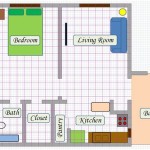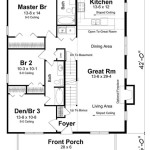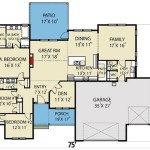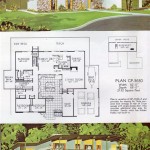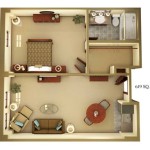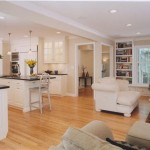Pacific Northwest Contemporary House Plans: A Guide to Modern Regional Design
Pacific Northwest Contemporary house plans represent a distinct architectural style that blends modern design principles with the unique environmental context of the region. Characterized by clean lines, natural materials, and an emphasis on indoor-outdoor living, these designs aim to harmonize homes with the surrounding landscape. This architectural style often prioritizes sustainability and energy efficiency, responding to the region's climate and environmental consciousness.
Understanding the characteristics of Pacific Northwest Contemporary house plans involves examining several key elements, including material selection, spatial organization, and the incorporation of natural light. These elements collectively contribute to the distinctive aesthetic and functional qualities of this architectural style. The design process also reflects a commitment to respecting the environment and creating homes that are both visually appealing and environmentally responsible.
The popularity of this style stems from its ability to create comfortable and aesthetically pleasing living spaces that are well-suited to the Pacific Northwest's climate and lifestyle. The design principles prioritize durability and low maintenance, ensuring that homes can withstand the region's often harsh weather conditions. Furthermore, the emphasis on natural light and connection to the outdoors creates a sense of tranquility and well-being for the inhabitants.
Key Features of Pacific Northwest Contemporary House Plans
Several defining characteristics contribute to the overall aesthetic and functionality of Pacific Northwest Contemporary house plans. These features are often integrated to create a cohesive and harmonious design that responds to the region's unique needs and preferences.
Emphasis on Natural Materials: A hallmark of this architectural style is the extensive use of natural materials, particularly wood. Cedar, Douglas fir, and other locally sourced woods are commonly employed for siding, framing, and interior finishes. These materials not only provide a warm and inviting aesthetic but also contribute to the sustainability of the building. Stone is another frequently used material, often incorporated in foundations, fireplaces, and landscaping elements. The integration of natural materials creates a sense of connection to the surrounding environment and enhances the overall visual appeal of the home.
The use of wood extends beyond structural elements to include details such as exposed beams, wood ceilings, and custom cabinetry. These features add texture and warmth to the interior spaces, creating a comfortable and inviting atmosphere. Stone accents, such as stacked stone walls or fireplaces, can also add visual interest and a sense of ruggedness to the design. The careful selection and integration of natural materials are essential for achieving the desired aesthetic and creating a connection to the natural environment.
Clean Lines and Simplicity: Pacific Northwest Contemporary house plans typically feature clean lines, simple forms, and a lack of excessive ornamentation. This minimalist approach emphasizes functionality and creates a sense of spaciousness and openness. The focus is on the essential elements of the building, allowing the materials and natural surroundings to take center stage. This architectural style avoids unnecessary embellishments and instead prioritizes the clarity and elegance of the design.
The emphasis on clean lines is evident in the overall shape of the building, as well as in the details such as windows, doors, and trim. Large windows and sliding glass doors are often used to maximize natural light and provide expansive views of the surrounding landscape. The use of simple, geometric shapes and a limited color palette further contributes to the minimalist aesthetic. This approach creates a sense of calm and tranquility, allowing the inhabitants to focus on the natural beauty of the Pacific Northwest.
Indoor-Outdoor Connection: A seamless connection between indoor and outdoor spaces is another defining characteristic of Pacific Northwest Contemporary house plans. This is achieved through the use of large windows, sliding glass doors, and outdoor living areas such as decks, patios, and covered porches. These features allow inhabitants to enjoy the natural beauty of the region year-round, regardless of the weather conditions. The integration of indoor and outdoor spaces creates a sense of spaciousness and enhances the overall living experience.
Covered porches and decks provide sheltered outdoor spaces that can be used even during rainy weather. These areas often feature comfortable seating, outdoor fireplaces, and dining areas, creating inviting spaces for relaxation and entertainment. Large windows and sliding glass doors allow natural light to flood the interior spaces, blurring the boundaries between indoors and outdoors. This connection to nature is a key element of Pacific Northwest Contemporary design, promoting a sense of well-being and connection to the environment.
Sustainability and Energy Efficiency
Sustainability and energy efficiency are often prioritized in Pacific Northwest Contemporary house plans, reflecting the region's environmental consciousness. These designs incorporate various strategies to reduce energy consumption, minimize environmental impact, and create comfortable and healthy living spaces.
Passive Solar Design: Passive solar design principles are often implemented to maximize the use of natural sunlight for heating and lighting. This involves orienting the building to take advantage of solar exposure, using strategically placed windows and skylights to capture sunlight, and incorporating thermal mass materials to store and release heat. Passive solar design can significantly reduce the need for artificial lighting and heating, lowering energy bills and minimizing environmental impact.
Proper orientation of the building is crucial for maximizing solar gain during the winter months. South-facing windows allow sunlight to penetrate deep into the interior spaces, warming the floors and walls. Overhangs and shading devices can be used to prevent overheating during the summer months. Thermal mass materials, such as concrete floors or brick walls, can absorb heat during the day and release it at night, helping to maintain a consistent temperature throughout the home.
Sustainable Materials: The selection of sustainable materials is another important aspect of energy-efficient design. This includes using locally sourced wood, recycled materials, and low-VOC (volatile organic compound) paints and finishes. Sustainable materials minimize the environmental impact of the building and create a healthier indoor environment.
Locally sourced wood is often preferred because it reduces transportation costs and supports local economies. Recycled materials, such as recycled glass countertops or recycled steel roofing, can also help to minimize environmental impact. Low-VOC paints and finishes are important for improving indoor air quality, reducing the risk of respiratory problems and other health issues.
Energy-Efficient Systems: Energy-efficient heating, cooling, and lighting systems are also incorporated into Pacific Northwest Contemporary house plans. This includes using high-efficiency furnaces, heat pumps, and air conditioners, as well as LED lighting and smart home technologies. These systems can significantly reduce energy consumption and lower utility bills.
High-efficiency heating and cooling systems are designed to use less energy than traditional systems, reducing both energy consumption and greenhouse gas emissions. LED lighting is much more energy-efficient than incandescent or fluorescent lighting, and it also lasts much longer. Smart home technologies, such as programmable thermostats and automated lighting controls, can further reduce energy consumption by optimizing energy usage based on occupancy and weather conditions.
Adapting to the Pacific Northwest Climate
The climate of the Pacific Northwest presents unique challenges and opportunities for architectural design. Pacific Northwest Contemporary house plans are specifically designed to address these challenges and take advantage of the region's mild but often wet climate.
Rainwater Management: Given the region's frequent rainfall, effective rainwater management is crucial. This involves designing roofs and drainage systems that can efficiently collect and divert rainwater away from the building. Rainwater harvesting systems can also be incorporated to collect and store rainwater for irrigation or other non-potable uses.
Overhanging eaves and gutters are essential for directing rainwater away from the walls and foundation of the building. Downspouts should be located strategically to prevent water from pooling around the foundation. Rainwater harvesting systems can collect rainwater from the roof and store it in tanks for later use. This can help to conserve water and reduce stormwater runoff.
Natural Light Optimization: Maximizing natural light is another important consideration, particularly during the darker winter months. This involves using large windows, skylights, and light wells to bring natural light into the interior spaces. Careful attention is also paid to window placement and orientation to optimize solar gain and minimize glare.
Skylights and light wells can be used to bring natural light into interior spaces that would otherwise be dark. Large windows and sliding glass doors allow natural light to flood the living areas. Window placement and orientation should be carefully considered to maximize solar gain during the winter months and minimize overheating during the summer months.
Durable Materials and Construction: The Pacific Northwest climate can be harsh on buildings, with frequent rain, wind, and temperature fluctuations. Therefore, it is essential to use durable materials and construction techniques that can withstand these conditions. This includes using rot-resistant wood, waterproof membranes, and high-quality insulation.
Cedar and other rot-resistant woods are commonly used for exterior cladding and trim. Waterproof membranes are essential for protecting the building envelope from moisture damage. High-quality insulation is important for maintaining a comfortable indoor temperature and reducing energy consumption. Careful attention to detailing and construction is crucial for ensuring the long-term durability of the building.
Overall, Pacific Northwest Contemporary house plans represent a thoughtful and well-integrated approach to architectural design. They combine modern aesthetic principles with a deep understanding of the region's unique environment and lifestyle. By prioritizing natural materials, clean lines, indoor-outdoor connection, sustainability, and climate adaptation, these designs create homes that are both beautiful and functional.

Perfect Plans For State And The Northwest Blog Eplans Com

Northwest Modern House Plans Home Designs Floor

Pacific Northwest House Plans Small Contemporary Style Beach Homes No Designs Exterior Styles Modern

7 Home Styles Of The Pacific Northwest Hammer Hand

20 Awesome Examples Of Pacific Northwest Architecture House Modern Mountain Home Roof

7 Home Styles Of The Pacific Northwest Hammer Hand

Pacific Northwest House Plans Atera Homes

House Design Pacific Northwest Coast Home Shed Roof Exterior

Island Living With Spectacular Views In The Pacific Northwest

3 250 Sq Ft Pacific Northwest Contemporary House Modern Plans


